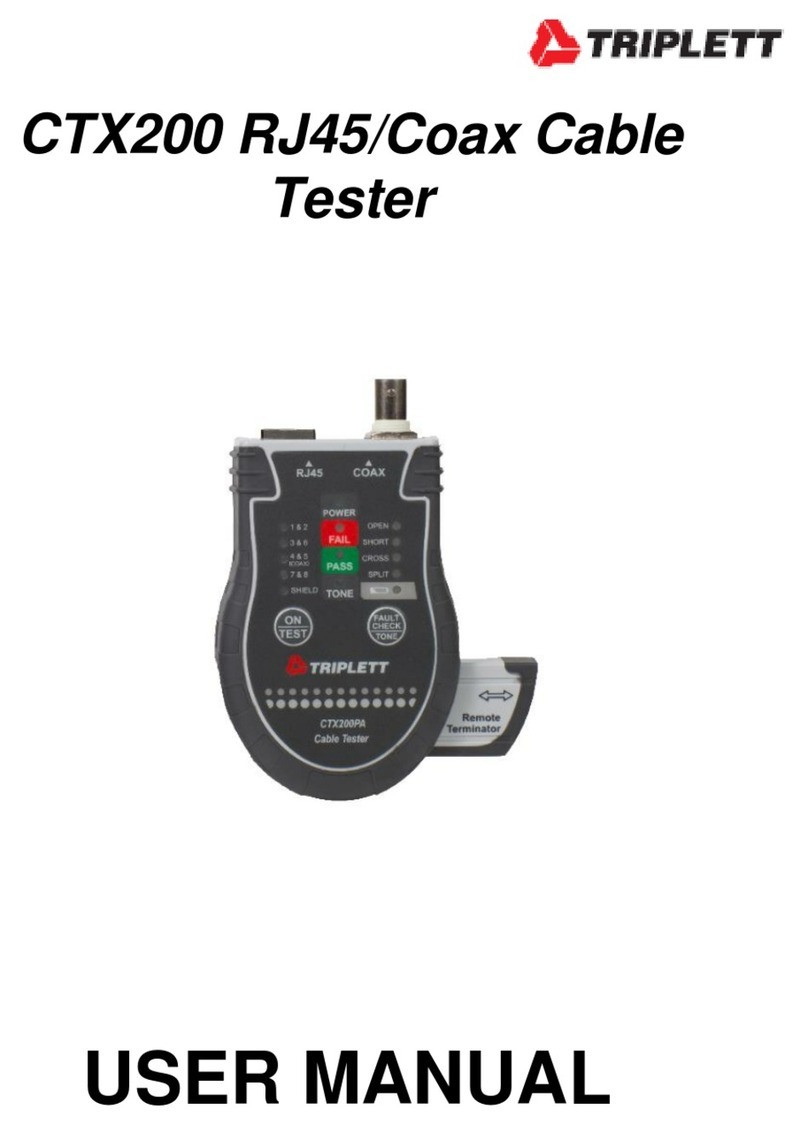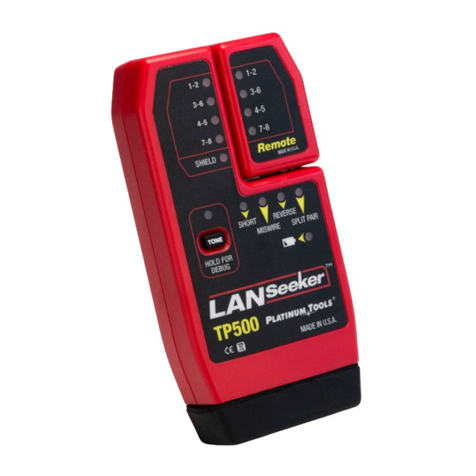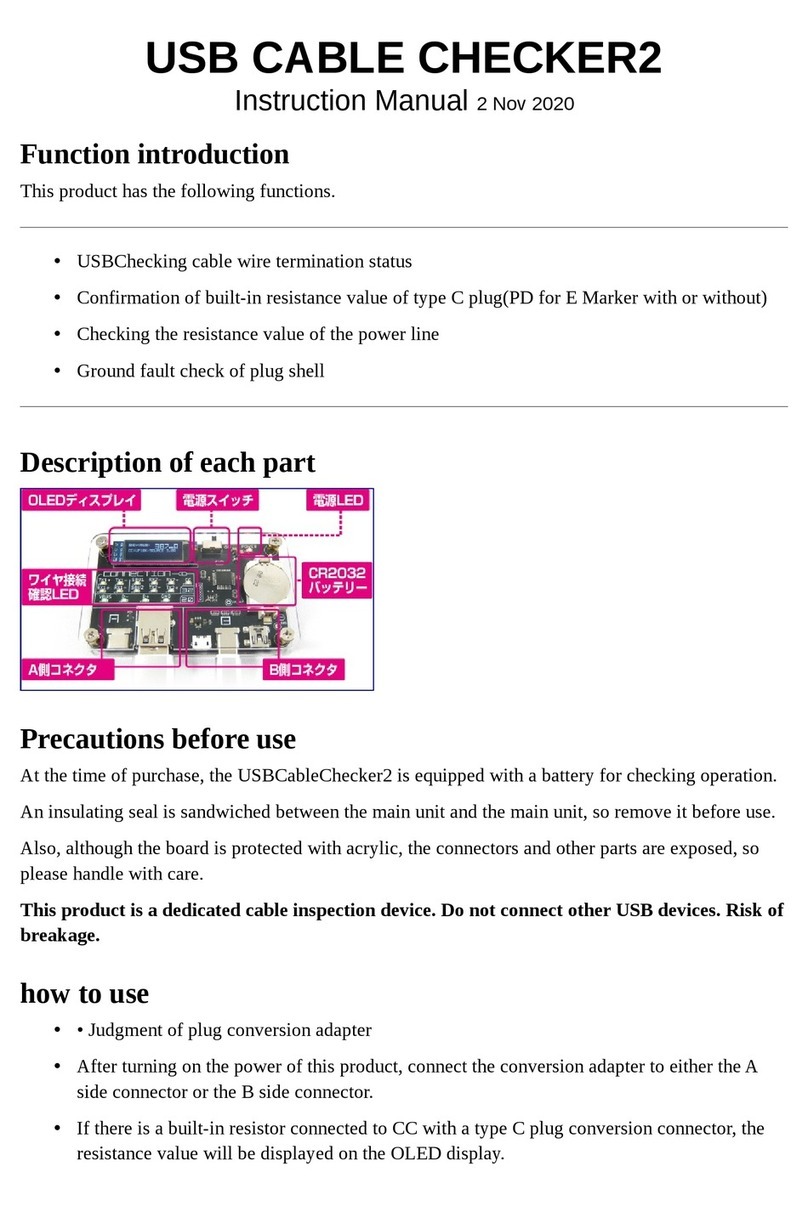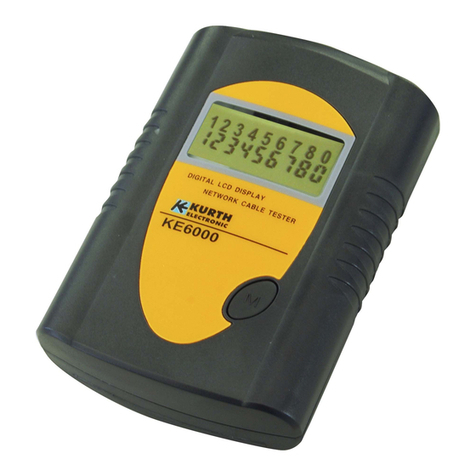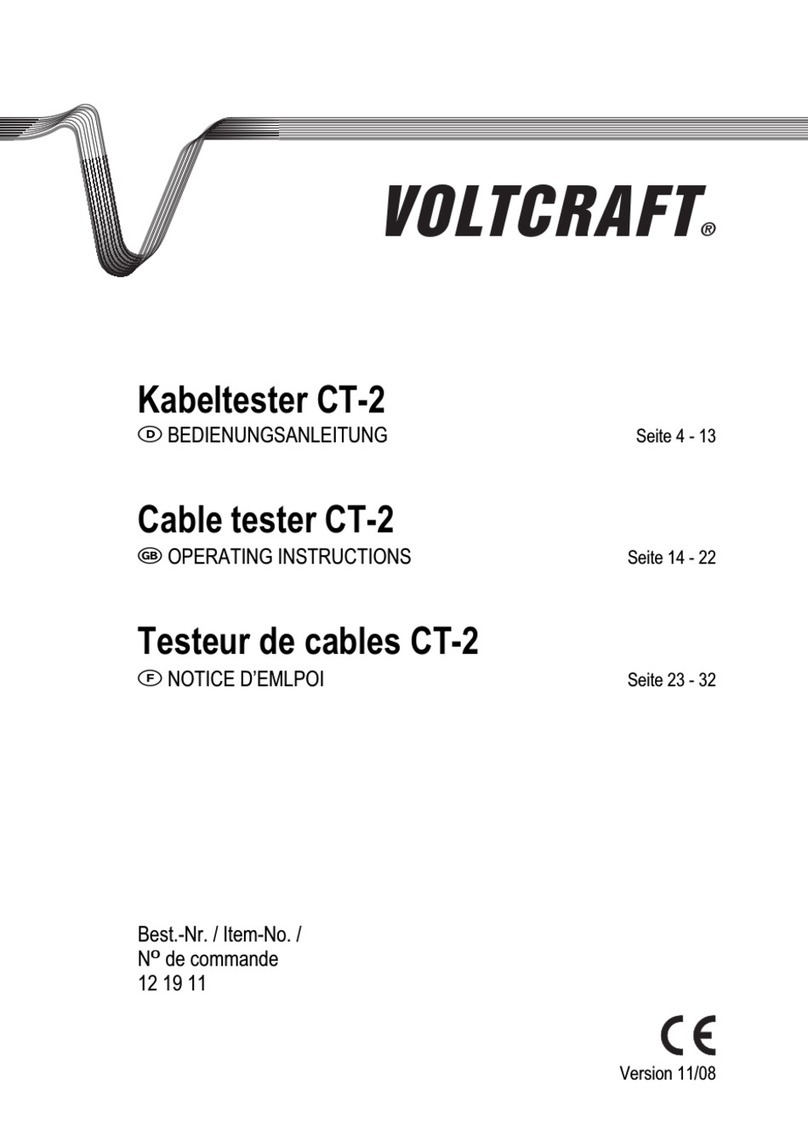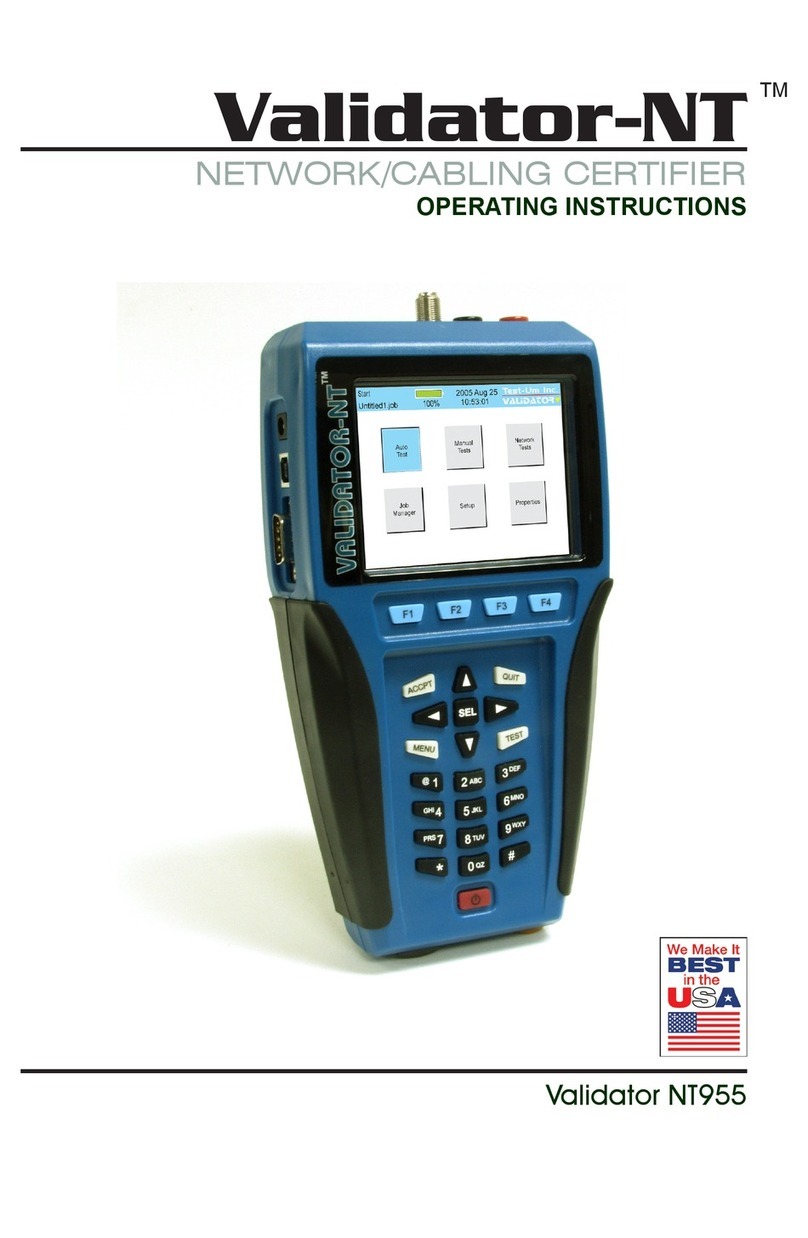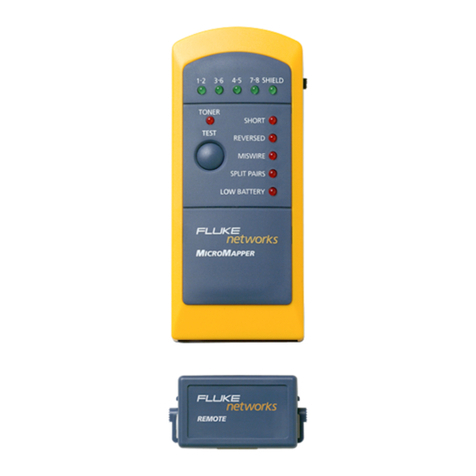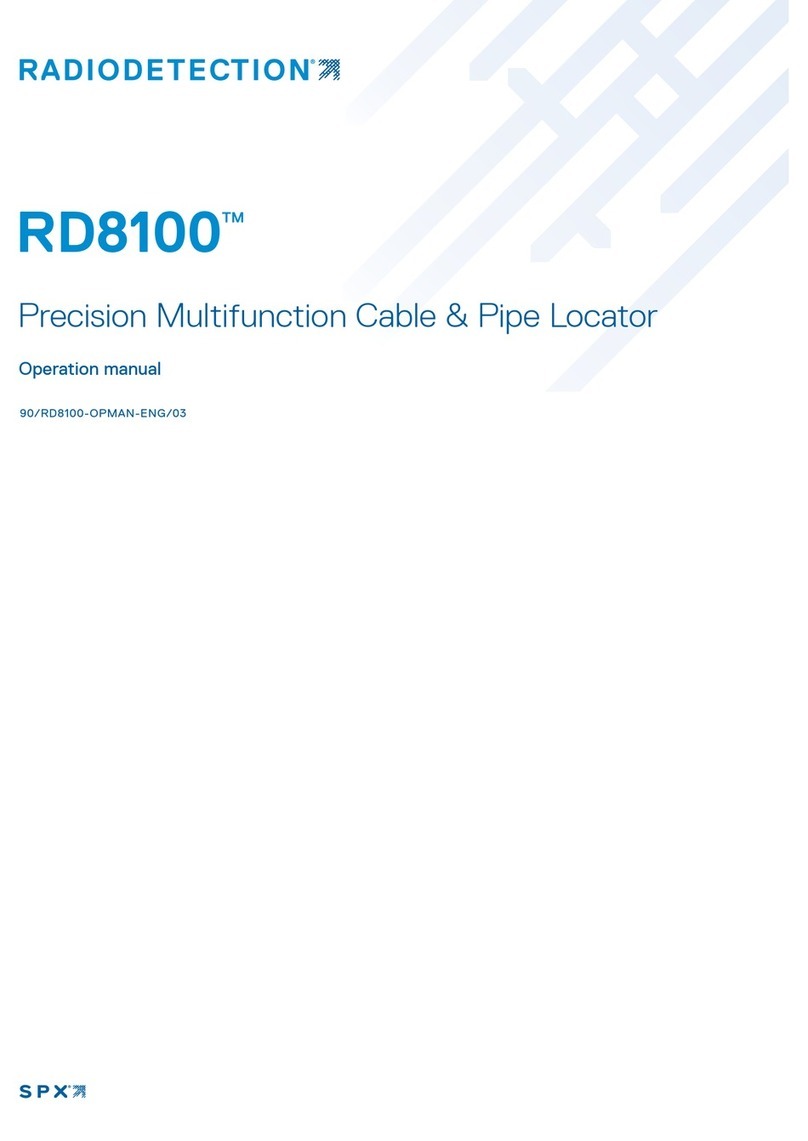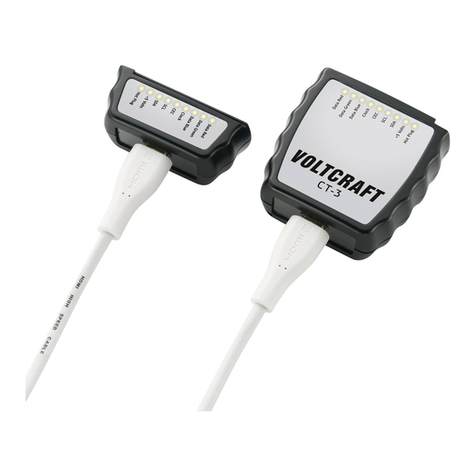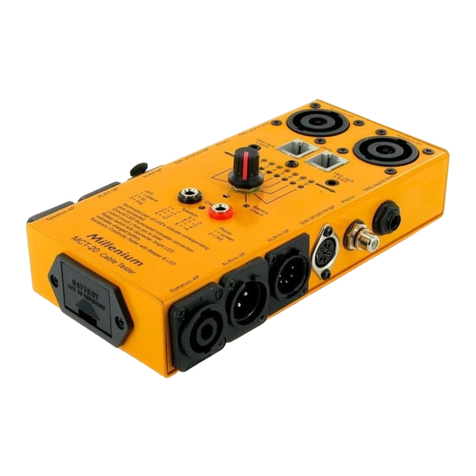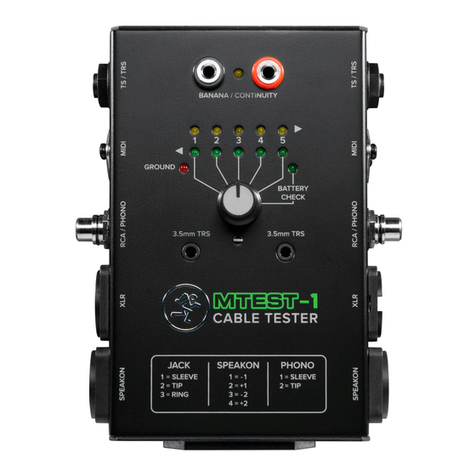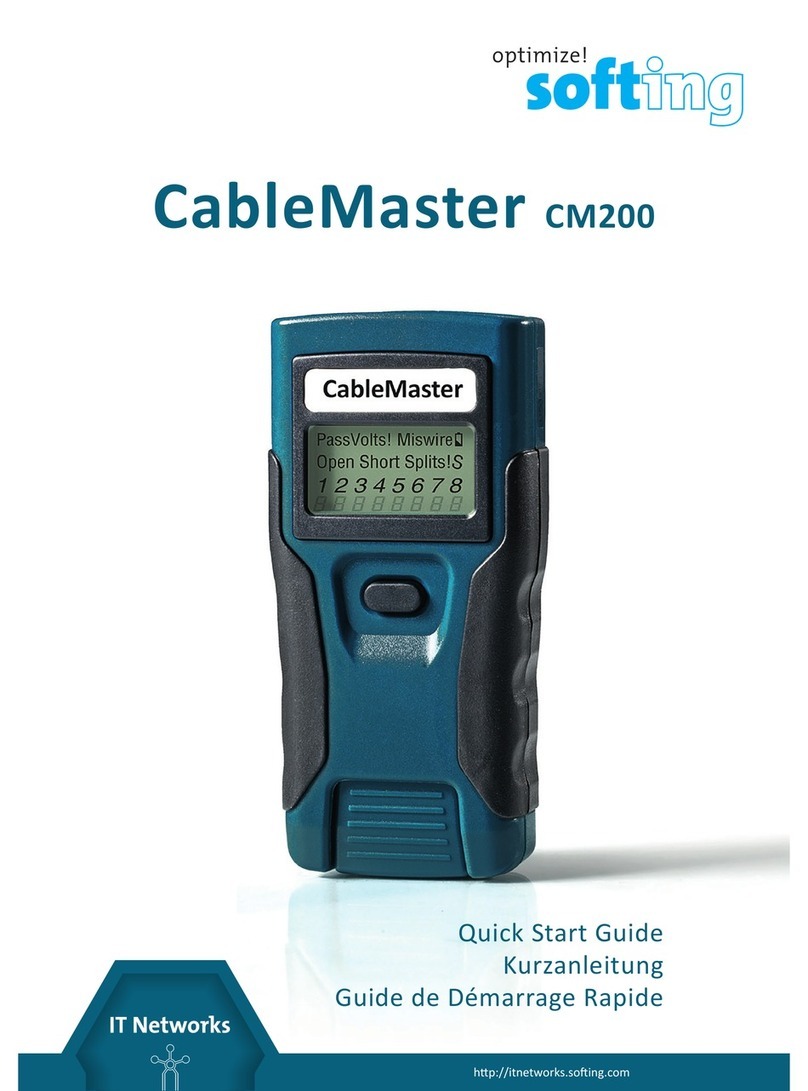do not use it.
3. Do not use the product in electric storms, wet
weather or thunderstorm weather.
4. Do not detect high-voltage cable lines (such as
220V power supply lines) with the product.
5. Do not use the product in a place with any
combustible gas or much dust or vapor.
6. Keep in mind that safety is the most important
thing: Voltages larger than 30VAC or 60VDC
highly tend to result in electric shocks.
7. Use appropriate personal protection equipment such
as safety goggles, mask, insulating gloves,
insulating shoes and insulating rubber mat.
8. In hot-line work, do not ground by yourself;
connect the ground wire and the null line first when
using a crocodile clip test line or an adapter jumper.
I. Product overview
The handheld multifunctional cable tracker is widely
used in networks, telecommunication, broadcasting and
TV, security protection, electric power, etc. It applies to
detect cable such as network cables, telephone cables
2
